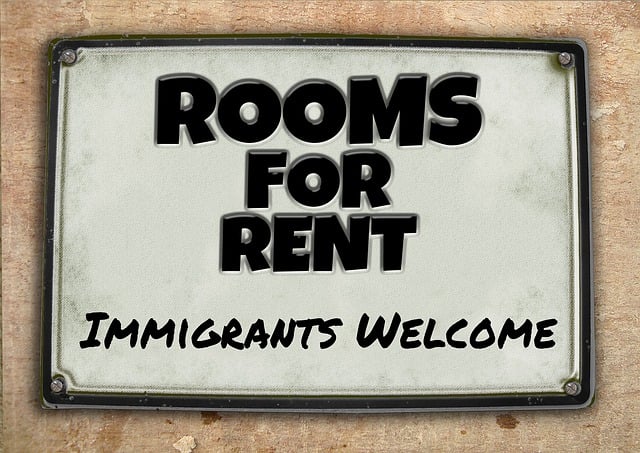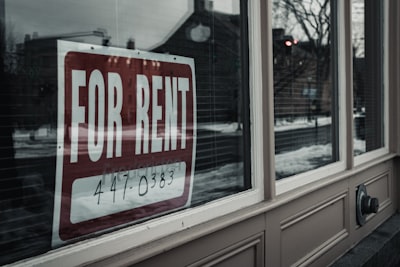Learn All About Tenancy Agreements in the UK
Your new flat smells of fresh paint, sunlight streams through the windows, and a wave of excitement washes over you. You've found your perfect accommodation! But before you raise a celebratory glass in your new living room, there's one important step: understanding your tenancy agreement.
Finding a new home in the UK is exciting, but navigating the complexities of a tenancy agreement can be daunting. This seemingly mundane document forms the bedrock of your relationship with your landlord, safeguarding your rights and outlining responsibilities on both sides.
So, let's cover tenancy agreements in the UK, equipping you with the knowledge to navigate this essential piece of paper with confidence. This document, essentially a contract between you and your landlord, outlines the rights and responsibilities of both parties. Understanding its key elements is important for a smooth and secure tenancy.
What is a Tenancy Agreement?
In simple terms, a tenancy agreement is a legally binding contract between you, the tenant (the person who occupies the property), and your landlord (the person who owns the property). While a verbal agreement can technically exist, having a written document is important for clarity and protection.
It details the terms and conditions under which you occupy the property, outlining your rights and responsibilities as well as those of your landlord, including:
- Types of Tenancy: Fixed-term (for a set period), periodic (continues until ended by either party), assured shorthold tenancy (AST - the most common type in England and Wales).
- Rent: Amount, due date, payment method, late fees.
- Deposit: Amount, permitted deductions, return conditions.
- Utilities: Whether included in rent, responsibility for bills.
- Occupants: Number of people allowed to live in the property.
- Pets: Whether allowed, any restrictions.
- Maintenance and repairs: Responsibilities of both parties.
- Decor and alterations: Permitted changes, and decorating restrictions.
- Ending the tenancy: Notice period, procedures for both parties.
Types of Tenancy Agreements
- Assured Shorthold Tenancy (AST): By far the most common type in the UK, an AST is typically for a fixed term (6 or 12 months initially) and automatically rolls over into a periodic tenancy thereafter.
- Periodic Tenancy: This typically starts after an AST ends and offers flexibility with week-by-week or month-by-month notice periods.
- Exclusions: Certain specific tenancies like student halls or holiday lets may have different agreements altogether.
Essential Clauses to Understand
A well-drafted tenancy agreement protects both you and your landlord. It provides clarity on your rights and responsibilities, preventing misunderstandings and potential disputes. It also serves as a vital piece of evidence should any issues arise during your tenancy.
- Parties: Ensure your and your landlord's full names and contact details are accurate.
- Property Details: This should include the full address, type of property, and any restrictions on its use.
- Term and Start Date: Clearly define the tenancy start and end dates (if fixed term) or notice period (periodic tenancy).
- Rent: Specify the monthly/weekly rent amount, due date, and acceptable payment methods. Late payment fees and rent increase conditions (if applicable) should also be included.
- Security Deposit: Understand the amount, reasons for deductions, and timeframe for return after vacating.
- Utilities: Determine whether utilities are included in the rent or if you're responsible for separate bills.
- Repairs and Maintenance: Clarify who is responsible for different types of repairs and maintenance issues (e.g., landlord for heating system, tenant for minor decorations).
- Subletting and Assignment: Understand if and under what conditions you can sublet or assign the tenancy.
- Termination Clauses: Both parties should know the grounds for terminating the agreement, including notice periods required.
Pro Tips for Tenants
- Read Carefully: Don't just skim - understand every clause before signing. If anything is unclear, seek clarification from your landlord or advisor. Take your time, ask questions, and seek advice if needed.
- Ask Questions: Don't be afraid to ask questions about anything you don't understand. A good landlord will be happy to explain the agreement in detail.
- Negotiate: Some clauses are negotiable, especially in a competitive rental market. Discuss fair terms with your landlord before signing.
- Keep Copies: Have a signed copy for both you and your landlord. Maintain digital copies for future reference.
- Know Your Rights: Familiarize yourself with tenancy laws in the UK. Resources like Shelter and Citizens Advice can provide valuable guidance.
- Communicate openly with your landlord. Raise any concerns or issues promptly and professionally.
- Seek support if you have problems. Housing advisors and legal aid services can offer valuable assistance.
What to Look Out For
- Unfair Terms: Be wary of terms that seem unfair or one-sided, favoring the landlord excessively. The government's website guides on identifying and challenging unfair terms. These may be unenforceable by law.
- Hidden Fees: Watch out for hidden fees or charges not clearly outlined in the agreement.
- Excessive Restrictions: Clauses that severely limit your use of the property or infringe on your privacy might be unreasonable.
- Vague Language: Ambiguous language can lead to disputes later on. Ensure clarity and specificity in key clauses.
- Clarity and Language: The agreement should be written in clear, plain English, avoiding legal jargon. If you encounter any unclear terms, seek clarification from your landlord or a housing advisor.
- Deposit Protection: Ensure your deposit is protected in a government-backed scheme, such as the Tenancy Deposit Scheme (TDS). This safeguards your money in case of disputes.
- Inventory and Condition Report: Before moving in, prepare a detailed inventory of the property's condition and take photos. This protects you from being held liable for pre-existing damage.
- Permitted Changes: Pay close attention to what alterations you are allowed to make to the property. Decorating restrictions and furniture limitations should be clearly outlined.
- Notice Periods: Understand the notice period required to end the tenancy, for both you and your landlord. This helps with planning and avoiding unnecessary conflict.
- Maintenance and Repairs: Clarify who is responsible for different types of maintenance and repairs. Emergency contact details for your landlord should also be included.
Beyond the Contract
While the agreement sets the initial framework, communication and respect are key to a harmonious tenancy. Maintain open communication with your landlord, promptly report any issues, and uphold your responsibilities as outlined in the agreement. Remember, a positive relationship can make your rental experience a much smoother ride.
Conclusion
Understanding your tenancy agreement empowers you as a tenant and sets the stage for a successful living experience. By equipping yourself with knowledge and staying vigilant, you can navigate the world of renting with confidence, ensuring your rights are protected and your new home feels like a genuine sanctuary. So, dive into the details, ask questions, and remember – you deserve a safe and comfortable space to call your own.
Maze provides an end-to-end platform that disrupts the traditional relocation model.
We connect people relocating with service providers, reduce cost and enable the personalization of customer journeys to the UK.
Follow us on Instagram, Twitter, Facebook and LinkedIn, or Contact us with your relocation enquiries.


